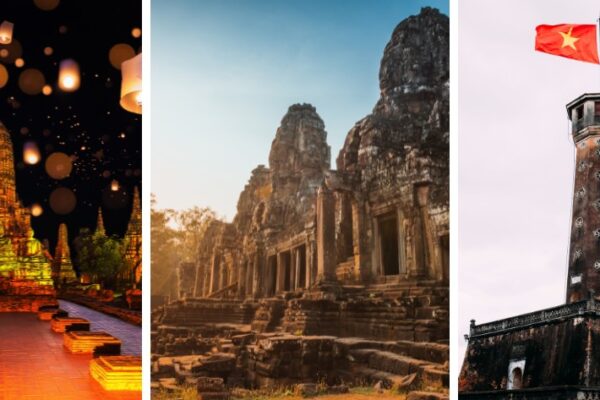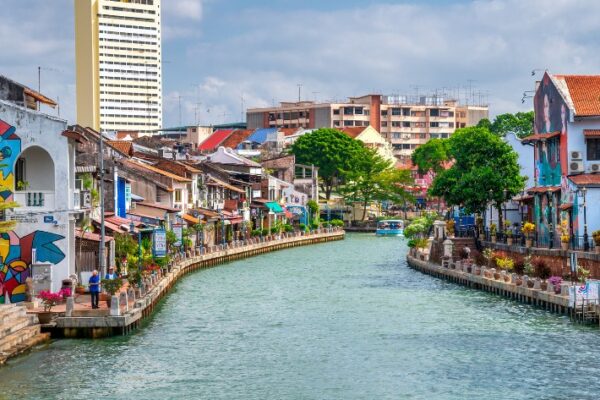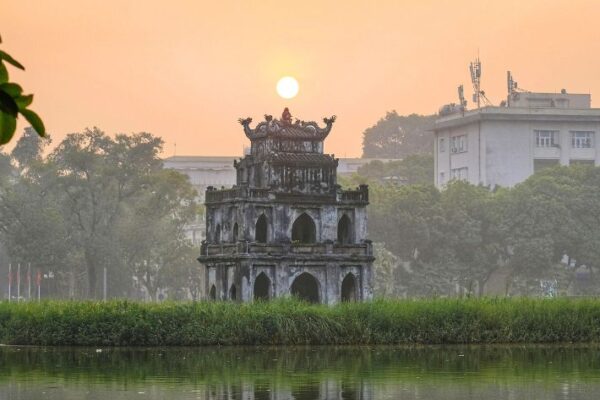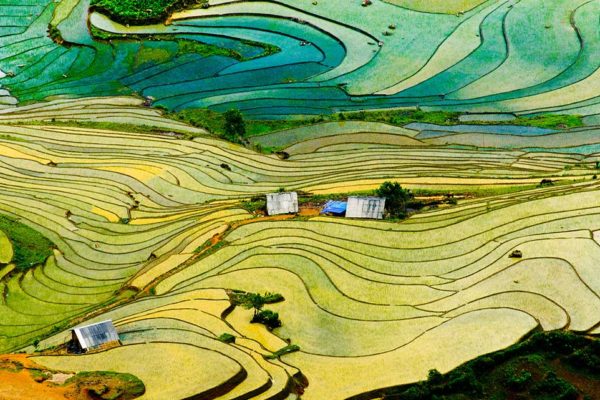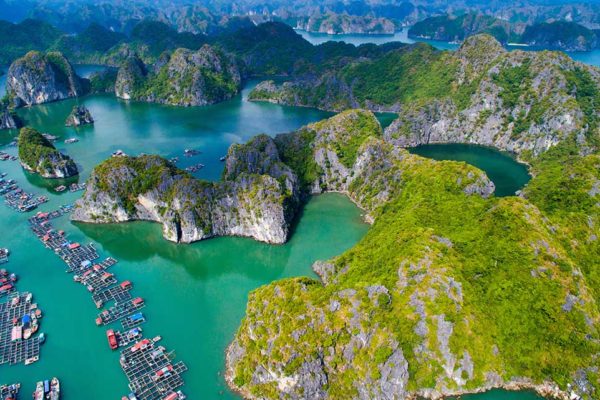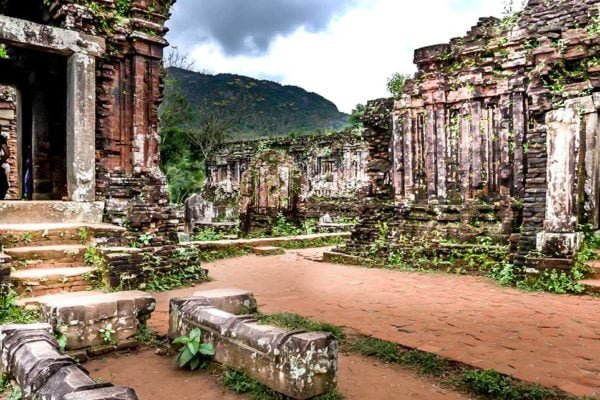Best Things To Do In Vietnam During The Dry Season (November–April)
The dry season in Vietnam, lasting from November to April, is the ideal time for travelers to discover the country at its best. With clear skies and mild temperatures, it’s perfect for enjoying the vibrant streets of Hanoi, exploring the ancient town of Hoi An, or relaxing on the sun-kissed beaches of Da Nang and Phu Quoc. This article will guide you through the best things to do in Vietnam during this season, offering curated suggestions that match the weather and regional highlights. Whether you’re seeking culture, adventure, or relaxation, our guide helps you plan a memorable trip.
Why the Dry Season is the Best Time to Visit Vietnam
The dry season from November to April consistently delivers ideal travel conditions across Vietnam. With minimal rainfall and favorable temperatures regionwide, this period elevates everything from sightseeing and trekking to beach relaxation. Here’s a detailed regional breakdown:
- North Vietnam (Hanoi, Sapa, Ha Long Bay): Northern Vietnam experiences cool, dry weather from November to April, with Hanoi averaging 17–22 °C and Sapa dipping to 12–20 °C in winter. These conditions create crisp, clear air and excellent visibility, perfect for mountain treks and cultural tours.
- Central Vietnam (Hoi An, Da Nang, Hue): Central Vietnam sees warm, dry weather between January and August, often peaking at 30–35 °C. Rainfall is low from February to August. Coastal stretches see calm seas and bright skies—ideal for beach days and exploring UNESCO World Heritage sites.
- South Vietnam (Ho Chi Minh City, Mekong Delta, Phu Quoc): The South remains hot and dry from mid-November to April, with daytime highs between 30–33 °C and rainfall under 100 mm/month. This stable heat supports river tours, beach outings, and Mekong excursions without the disruption of sudden showers.
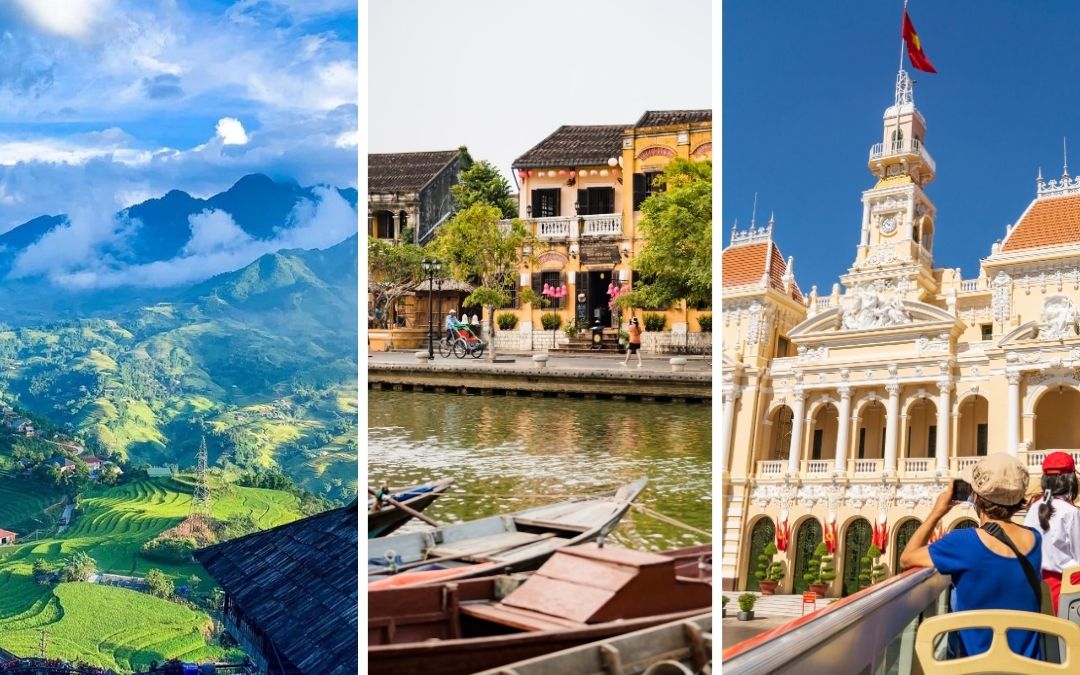
Sunny skies and low humidity make it ideal for travel across Vietnam.
The consistent sunshine and comfortable temperatures bring out the country’s full beauty while making outdoor adventures smoother and more enjoyable. Here’s how the dry climate enhances specific types of travel across Vietnam:
- Improved mobility and scenic views: Clear skies and dry roads ensure that long-distance train rides, road trips, and boat cruises are more predictable and enjoyable. Visibility is also at its best, making mountain ranges, coastal views, and rice terraces more stunning, especially during sunrise or sunset.
- More immersive cultural experiences: Festivals, night markets, and street performances thrive in dry conditions. From Tet celebrations to lantern festivals in Hoi An, the dry season allows travelers to fully participate in open-air cultural activities without worrying about weather-related cancellations or discomfort.
- Greater access to remote areas: In the rainy season, remote villages and national parks may become inaccessible due to flooding or slippery terrain. The dry season ensures safer access to highland communities, jungle trails, and protected nature reserves, allowing for deeper exploration and local encounters.
- Longer travel days with consistent weather: Stable weather across regions enables travelers to plan full-day excursions—whether it’s hiking, biking, or island-hopping—without having to pause for downpours. This reliability helps maximize every day of the itinerary with fewer disruptions or schedule changes.
- Ideal conditions for photography: The dry season provides natural lighting, vibrant landscapes, and atmospheric clarity—key ingredients for stunning travel photos. Whether shooting street scenes in Hanoi or panoramic views in Ha Long Bay, travelers will find it easier to capture Vietnam’s colors and contrasts at their best.
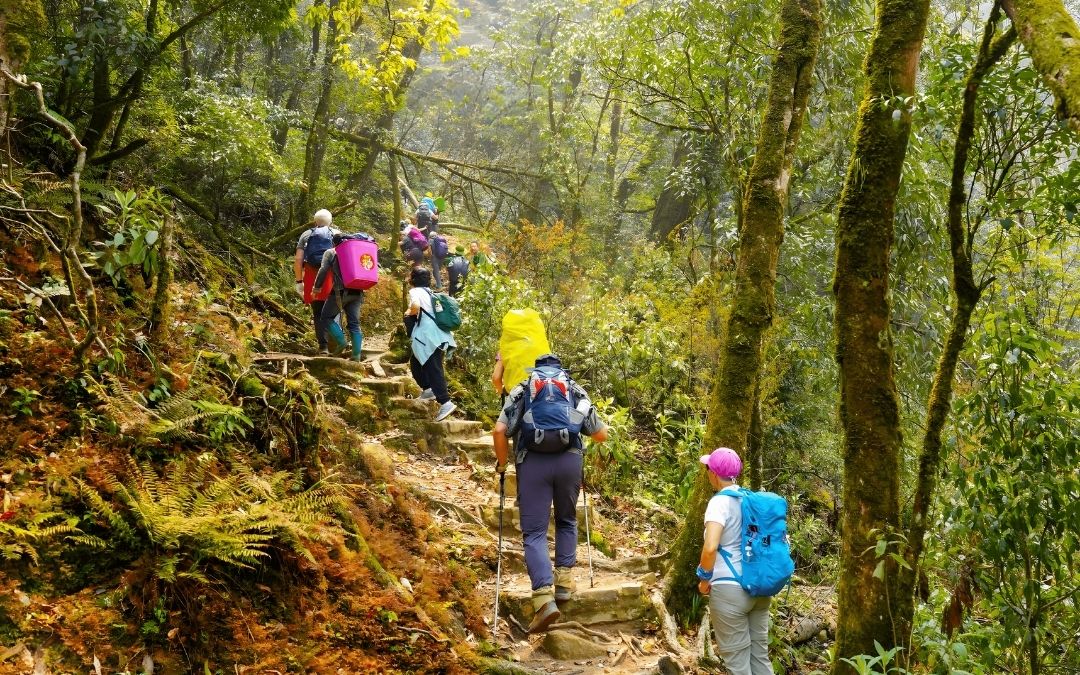
Dry days unlock endless outdoor adventures throughout Vietnam.
Best Things To Do in Vietnam During the Dry Season
When planning your journey to Vietnam between November and April, here are the best things to do in Vietnam, highlighting regional highlights that shine in clear, dry weather.
1. In Northern Vietnam
Trek Through the Rice Terraces of Sapa & Ha Giang
The crisp, dry air during this season makes hiking even more enjoyable. In Sapa, trails like Lao Chai–Ta Van wind through lush terraced valleys and H’mong, Tay, and Red Dao villages where you can immerse yourself in authentic ethnic minority lifestyles—home stays, handicrafts, and local markets.
Alternatively, trek through Ha Giang province (Ma Pi Leng and Lung Tam), where soaring mountain passes overlook winding rivers and rugged landscapes—ideal for adventurous trekkers exploring remote hill communities.
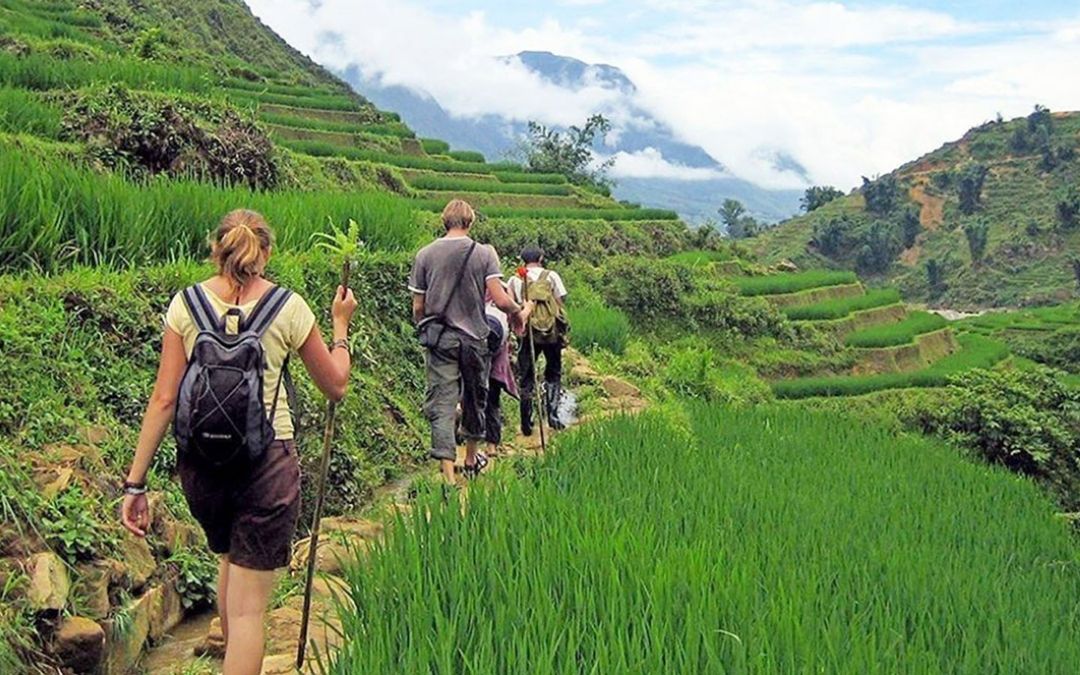
Hikers find ideal trails in Sapa’s sunny hills and Ha Giang’s valleys.
Cruise on Ha Long Bay
Ha Long Bay’s calm, mirror-like waters during the dry season make it ideal for an overnight cruise. Popular 2-day, 1-night Halong Bay cruises such as Sena Cruise ($120), Pelican Cruise ($135), or luxury options like Paradise Elegance (~$170) offer a full itinerary.
Travelers can kayak through hidden lagoons, explore Sung Sot Cave, enjoy sunset on deck, join a Vietnamese cooking class, or try squid fishing at night. Morning tai chi sessions and floating village visits add to the experience. Clear skies and mild weather elevate every moment, making this one of the best things to do in Vietnam’s north.
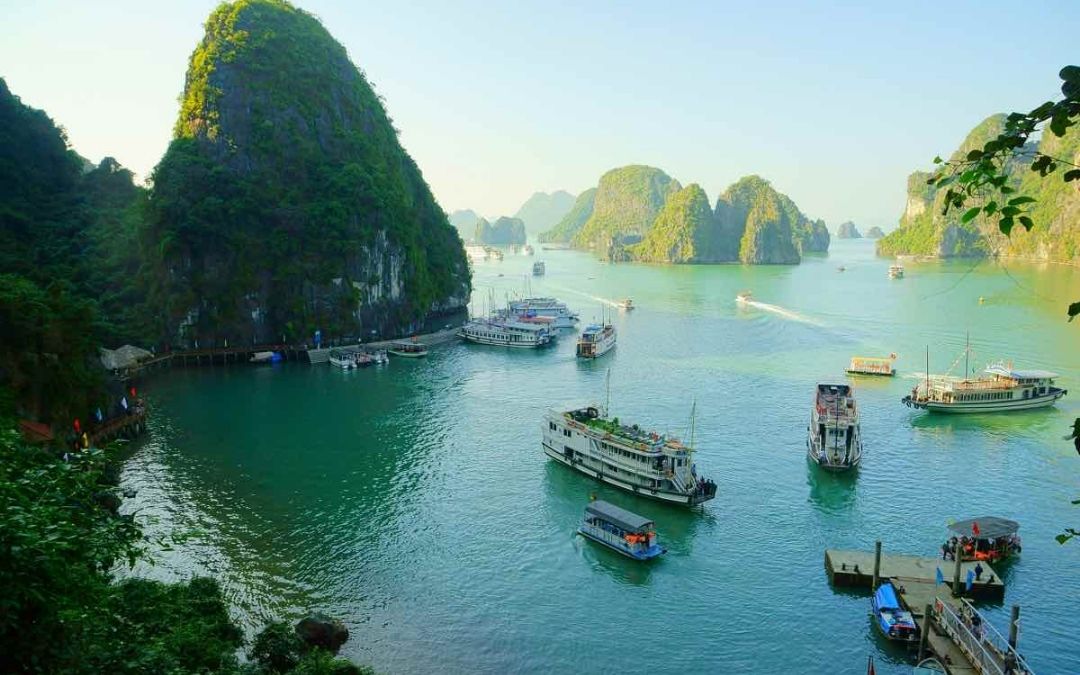
You’ll see Ha Long Bay at its most photogenic during this season.
Explore Hanoi’s Heritage in Comfort
Hanoi’s Old Quarter and Hoàn Kiếm Lake are best enjoyed under dry skies—strolling narrow streets, sipping traditional egg coffee, or catching seasonal festivals.
From late January to early February, the city comes alive with vibrant Tet (Lunar New Year) celebrations: dragon dances, flower markets, ancestor rituals, and communal gatherings fill the air with festive energy. The favorable weather makes exploring heritage sites like the Temple of Literature or colonial architecture a breeze.
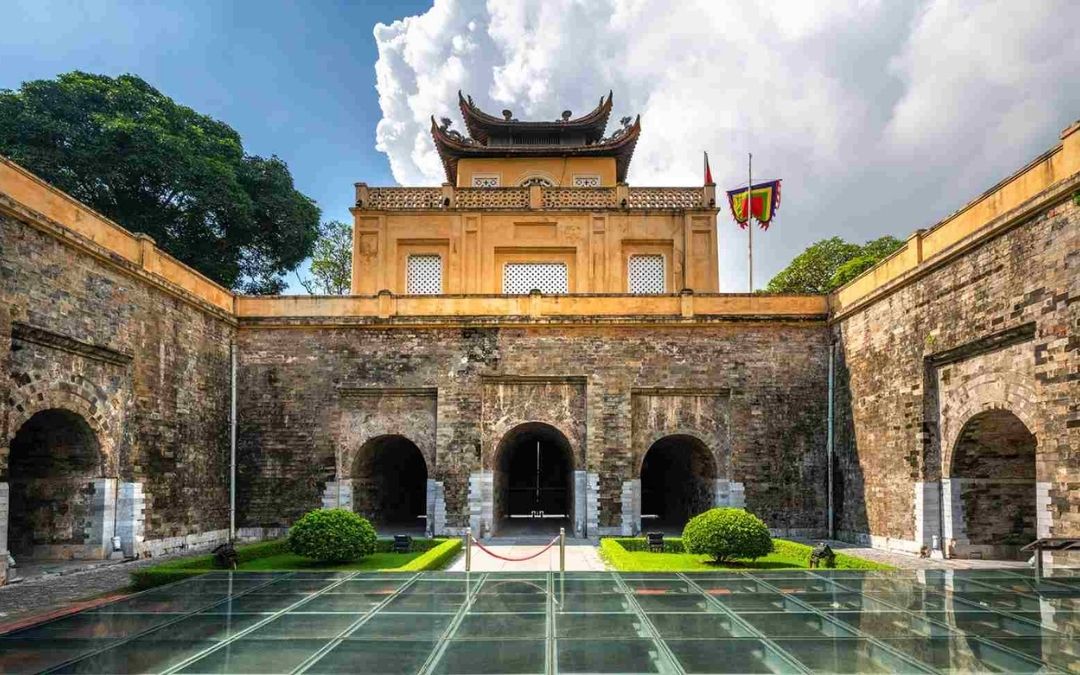
History buffs explore Hanoi’s temples and old streets without summer heat.
> Read more: How to Plan the Perfect Northern Vietnam Tour: Culture, Nature & Local Charm
2. Central Vietnam
a. Wander the Ancient Streets of Hoi An
During the dry season, Hoi An’s charm shines brightest. The town’s well-preserved yellow-walled houses, cobbled streets, and riverside cafés are perfect for strolls under clear skies.
Every full moon, the Hoi An Lantern Festival lights up the Old Town with thousands of glowing lanterns floating on the Thu Bon River, traditional music, and folk games. Just outside town, An Bang and Cua Dai beaches offer sunshine and calm seas, ideal for swimming, cycling along the coast, or sipping fresh coconut under swaying palms.
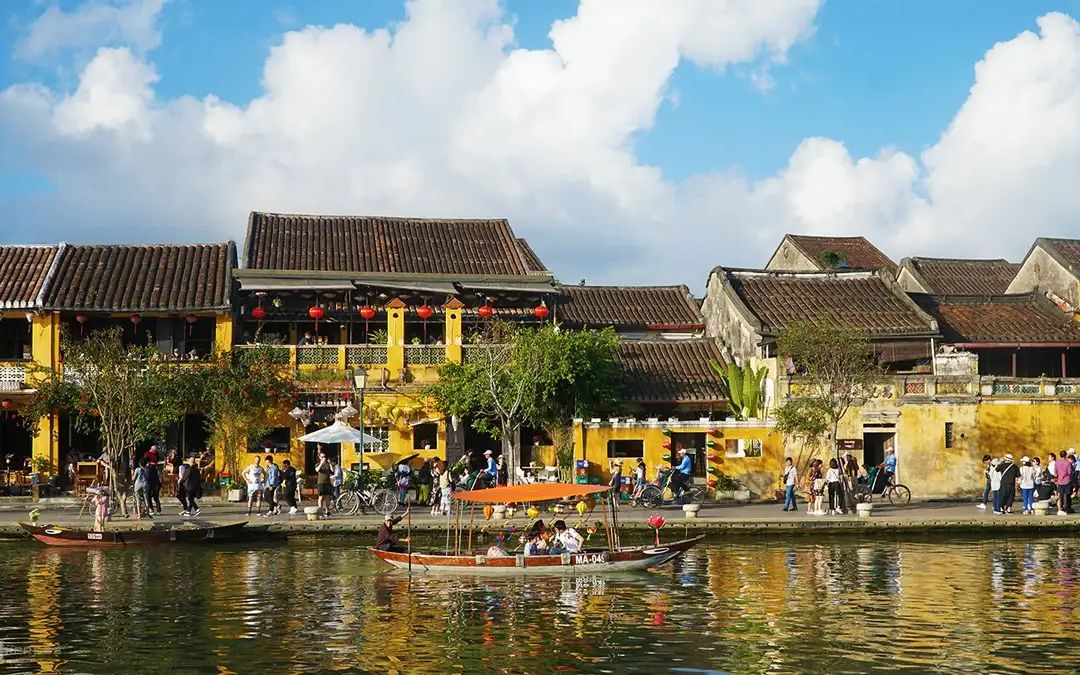
You can fully enjoy Hoi An’s charm during this dry stretch.
b. Visit the Imperial City of Hue
Hue’s ancient grandeur is more accessible and enjoyable in the mild, dry weather from January to April. Visitors can explore the Imperial Citadel, a UNESCO World Heritage site, at a relaxed pace, roaming palaces, temples, and gardens without the usual heat or rain.
A boat cruise along the Perfume River is one of the best things to do in Central Vietnam, offering scenic views of iconic pagodas and royal tombs. Sunset adds a magical touch, as golden light reflects off the water and hills, creating a peaceful, regal atmosphere.
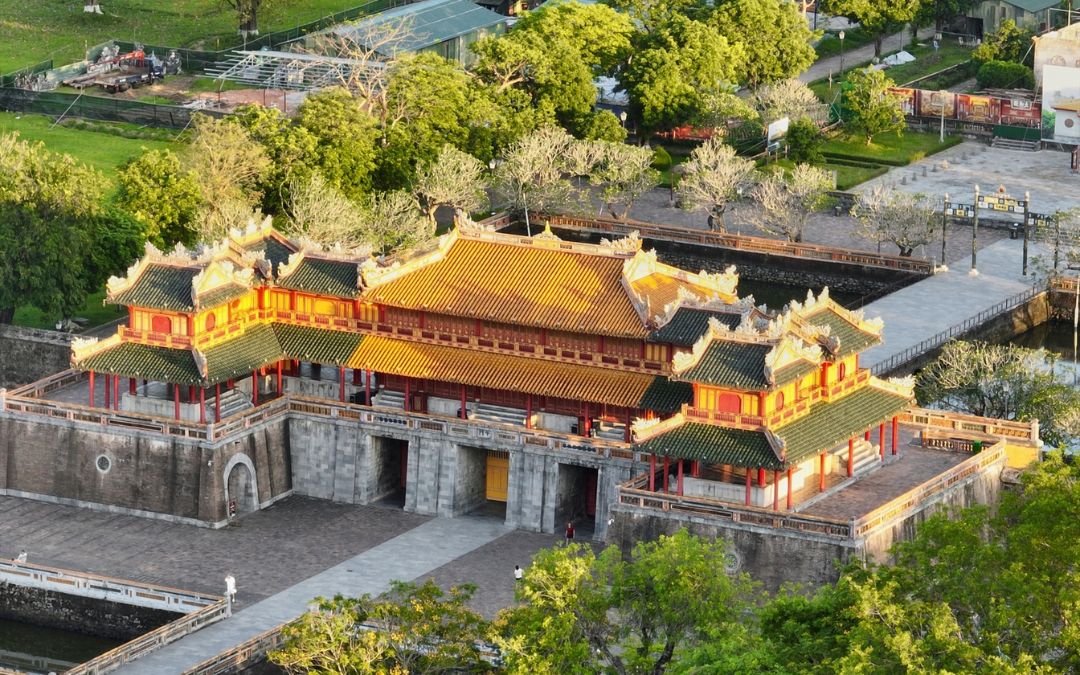
Culture seekers roam Hue’s palaces without tropical rain disrupting plans.
c. Marvel at Marble Mountains & My Son Sanctuary
Dry-season conditions make it easier to climb and explore the Marble Mountains near Da Nang, a cluster of limestone hills dotted with Buddhist caves, temples, and panoramic viewpoints.
Further inland, the My Son Sanctuary reveals crumbling yet majestic Hindu ruins, once a spiritual center of the Champa Kingdom. Clear skies improve visibility for photography and allow visitors to connect more deeply with the historical and religious significance of these mystical sites.
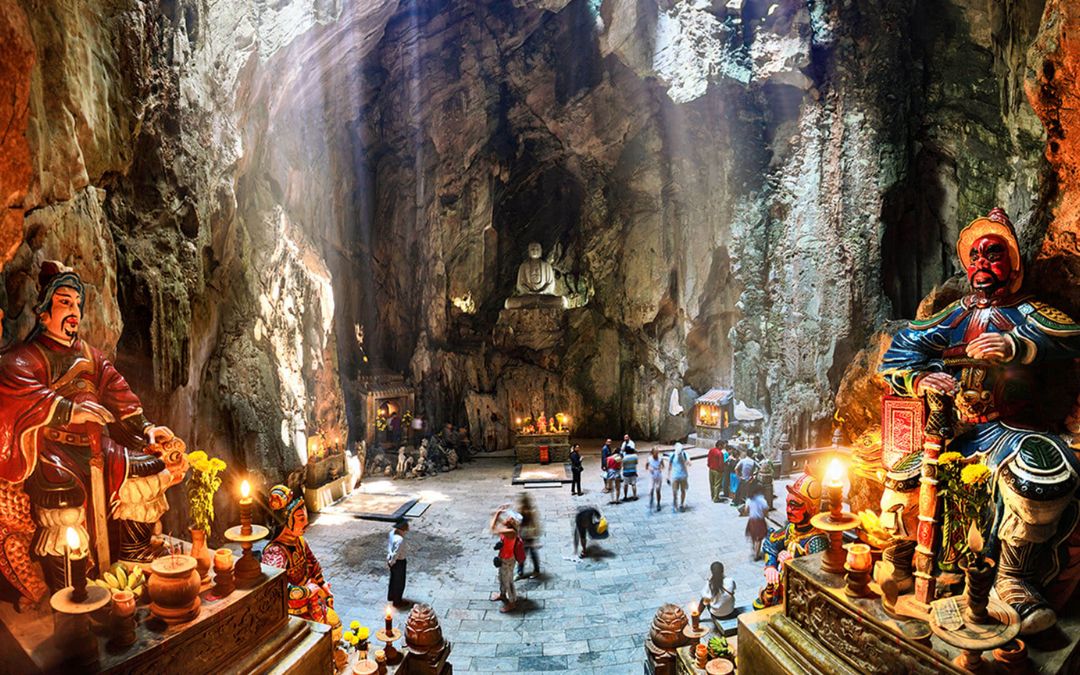
The Marble Mountains reveal their full beauty in clear weather.
> See tour: South Central Vietnam Tour 8 Days
3. Southern Vietnam
a. Relax on Phu Quoc & Con Dao Islands
From December to March, the southern islands enjoy calm seas, warm sunshine, and minimal rain—perfect for beach lovers. On Phu Quoc, travelers can snorkel or dive in coral-rich waters off An Thoi Archipelago, or simply unwind on Sao and Long Beach. Tour prices for island-hopping or snorkeling trips range from $25–$50/day, including lunch and gear.
Meanwhile, Con Dao offers quieter beaches and a unique experience: visitors can join sea turtle conservation tours at Hon Bay Canh, where from April (early nesting season), you may help release baby turtles into the ocean—an unforgettable memory.
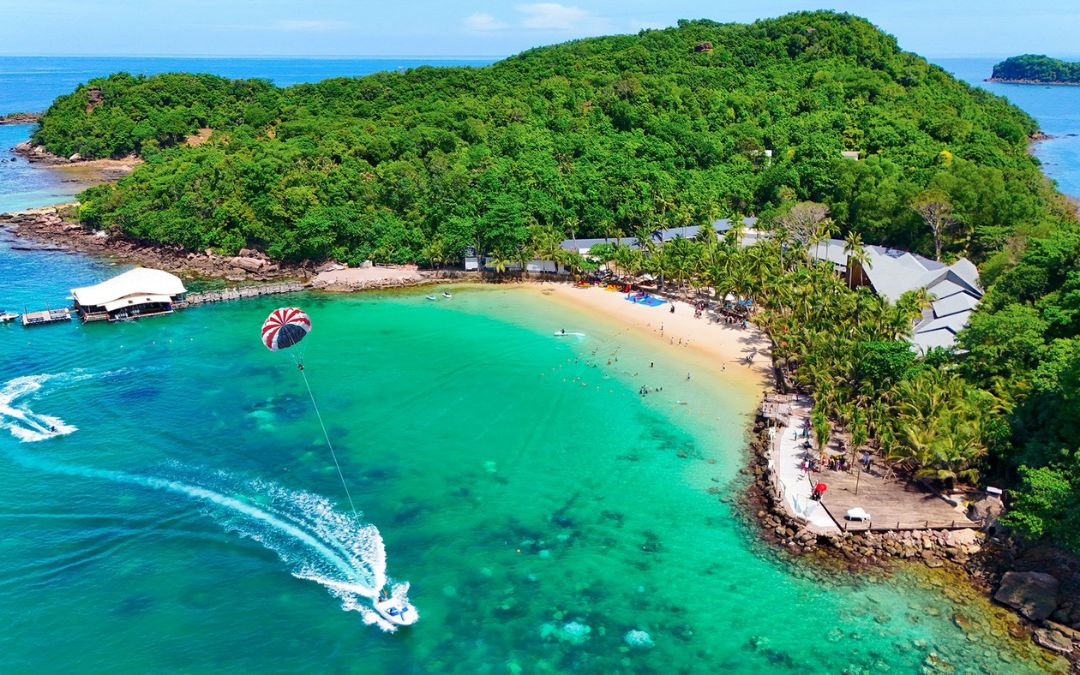
The islands welcome visitors with calm seas and soft breezes.
b. Cruise the Mekong Delta
The dry season means easier access to the Delta’s river network. Join a boat tour through Cai Rang or Phong Dien Floating Markets, where vendors sell fruit, noodles, and coffee straight from their boats. Travelers often enjoy a traditional breakfast on the river, such as bún riêu or hủ tiếu served from a cooking pot onboard.
Many tours include village visits, rice wine tastings, and cycling through coconut groves, making them one of the best things to do in Vietnam for travelers seeking authentic, local experiences. Day trips from Can Tho or overnight journeys from Ho Chi Minh City range from $20–$80, depending on the route and duration.
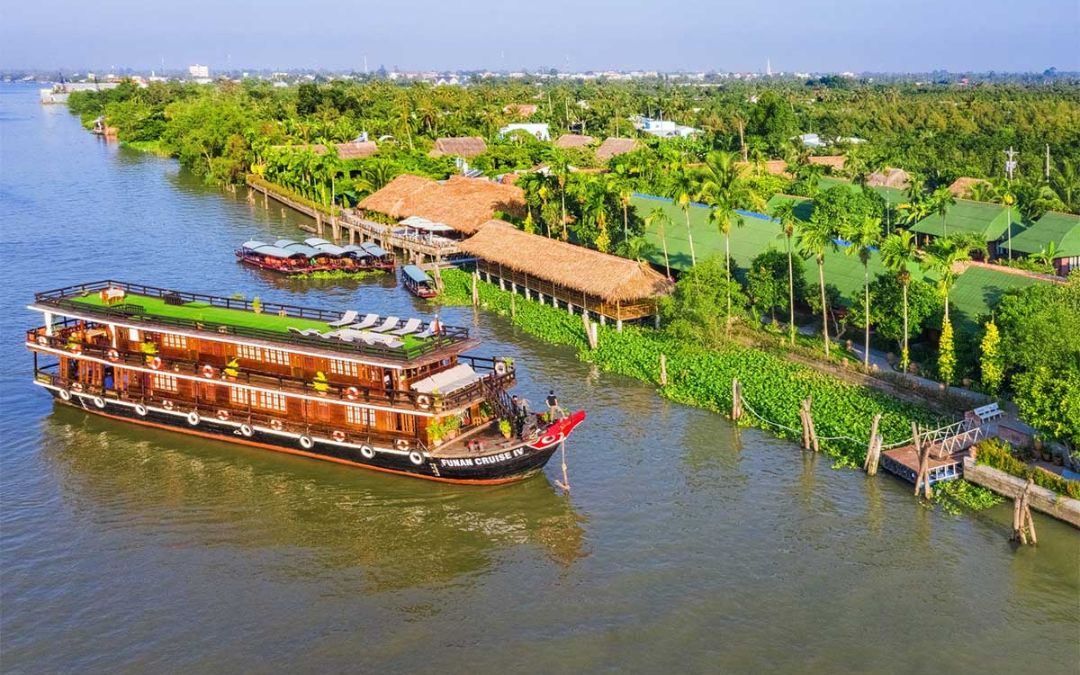
Locals and tourists enjoy the delta’s peace in the dry season.
c. Explore Ho Chi Minh City’s Urban Energy
With low rainfall and warm nights, Saigon in the dry season pulses with activity. Food lovers can join street food tours to sample cơm tấm, bánh xèo, bún thịt nướng, or chè from local vendors. Rooftop bars like Chill Skybar or Saigon Saigon Bar offer skyline views and cocktails.
History buffs can explore landmarks such as the War Remnants Museum, Notre-Dame Cathedral, and Independence Palace, all more enjoyable without heatwaves or downpours. The city’s blend of culture, chaos, and cuisine makes it a must-visit stop during this season.
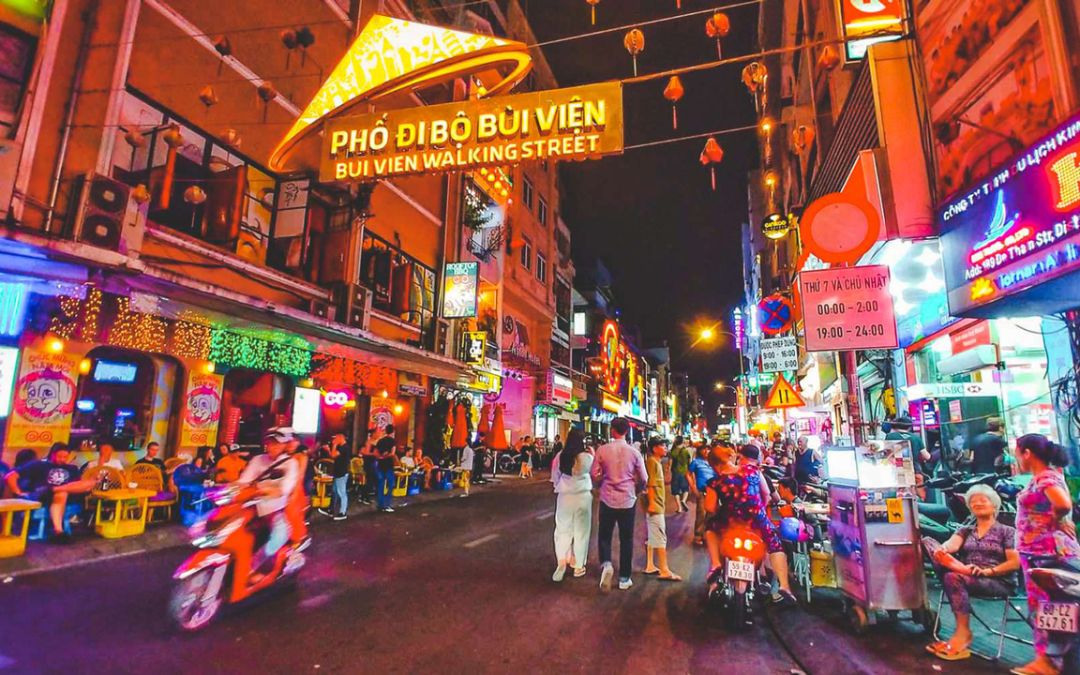
Shoppers and foodies explore Saigon freely without summer rains.
> See tour: Ho Chi Minh City to Mekong Delta Tour
Vietnam Festivals and Events in the Dry Season
Vietnam’s dry season brings more than sunshine—it’s when vibrant cultural celebrations peak. Here are some standout festivals and events you can experience during this time:
1. Hoi An Lantern Festival (Monthly, on full moons)
Taking place on the 14th day of each lunar month in the ancient town of Hoi An, this magical festival transforms the streets into a sea of glowing lanterns. From evening until night, electric lights are turned off, allowing colorful lanterns to light up the town. Locals and tourists alike release paper lanterns onto the Hoai River, enjoy traditional music, folk games, and explore lantern-lit markets.
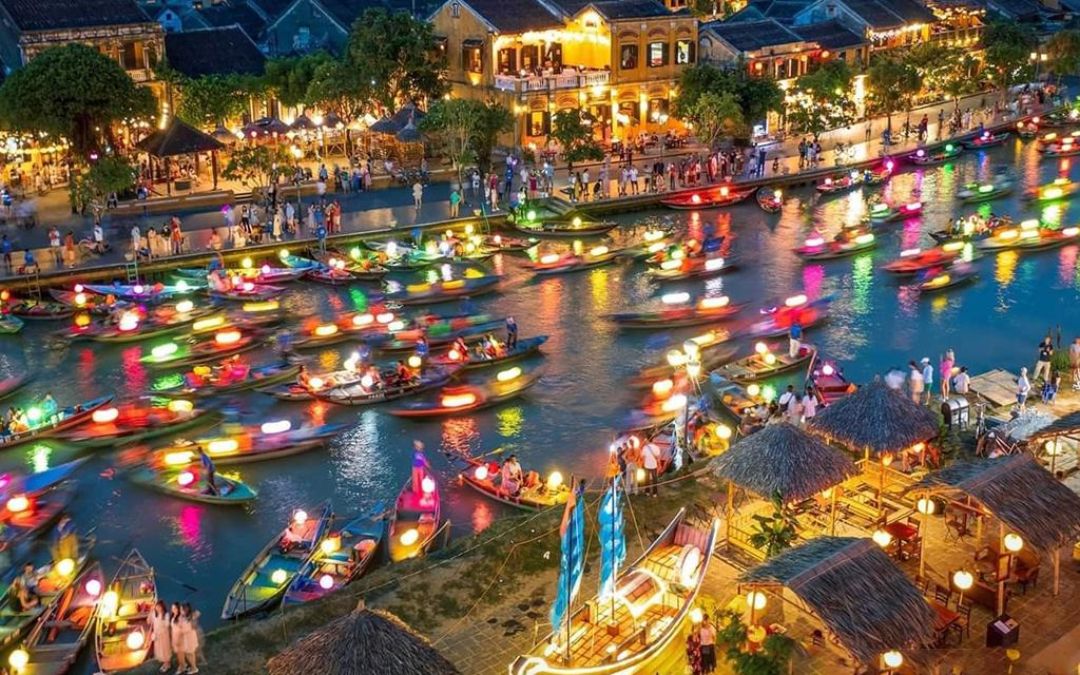
The river glows with color when the night stays dry and still.
2. Tết (Lunar New Year) – Late January to early February
Celebrated nationwide, Tết is Vietnam’s most important holiday, marking the arrival of spring and a fresh start. Families clean their homes, prepare special dishes like bánh chưng, and honor their ancestors through altar offerings. Streets are filled with red decorations, firecrackers, lion dances, and flower markets. It’s a time for family reunions, giving lucky money, and wishing good fortune.
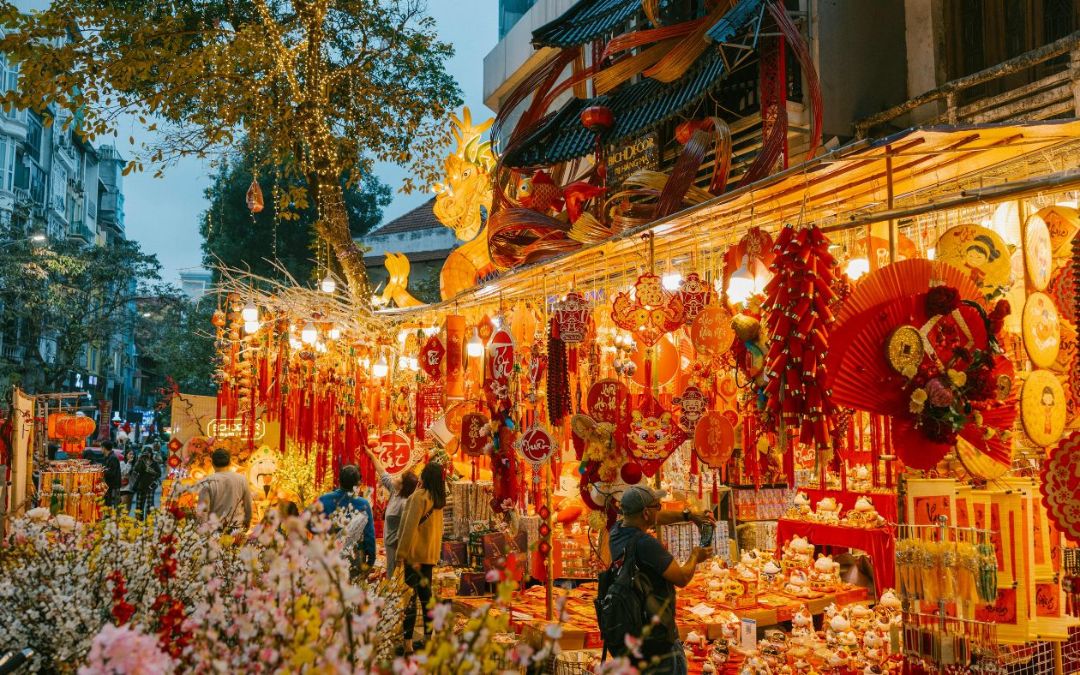
The whole country bursts into bloom to welcome a fresh new year.
3. Perfume Pagoda Festival (February to March)
Held in My Duc District, about 70 km southwest of Hanoi, this Buddhist festival draws thousands of pilgrims to the Perfume Pagoda. The journey involves a scenic boat ride along the Yen River, followed by a hike or cable car ride to the sacred Huong Tich Cave. Devotees light incense, offer prayers, and seek blessings for health, wealth, and happiness.
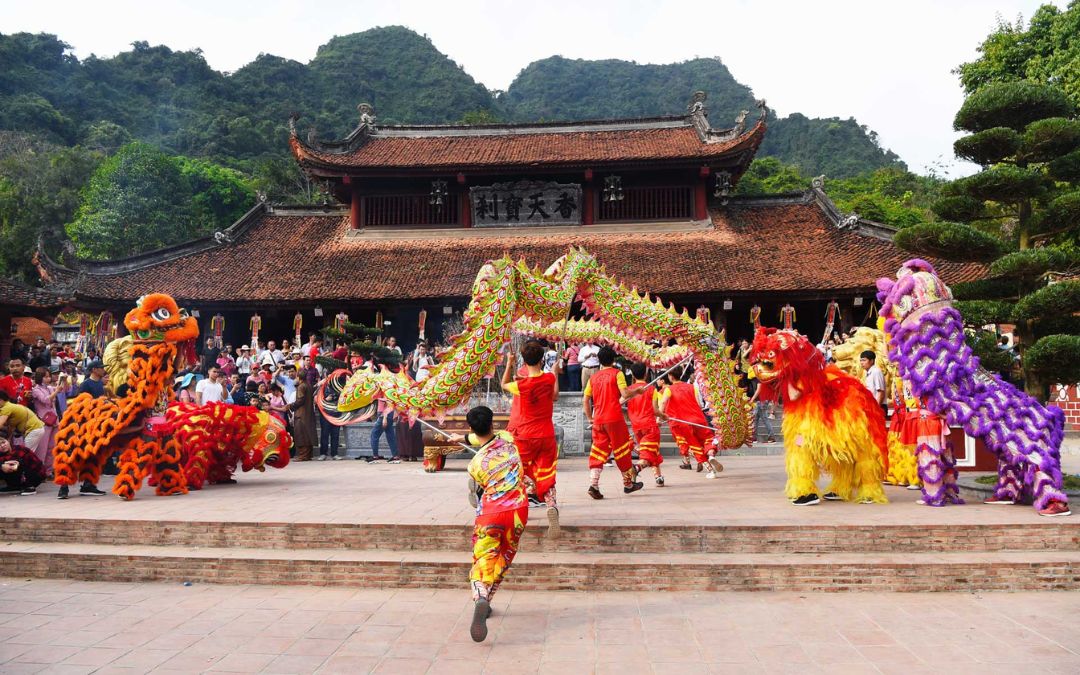
Visitors join locals in prayer and celebration at this sacred site.
4. Ok Om Bok Festival (Mid-November)
Celebrated by the Khmer ethnic group in the Mekong Delta, especially in Soc Trang and Tra Vinh, this festival thanks the Moon God for good harvests. Families prepare offerings of sticky rice, fruits, and sweet treats. The highlight is the Ngo boat race—vibrant, fast-paced, and deeply rooted in local tradition. Lanterns are also floated into the sky as wishes for peace and prosperity.
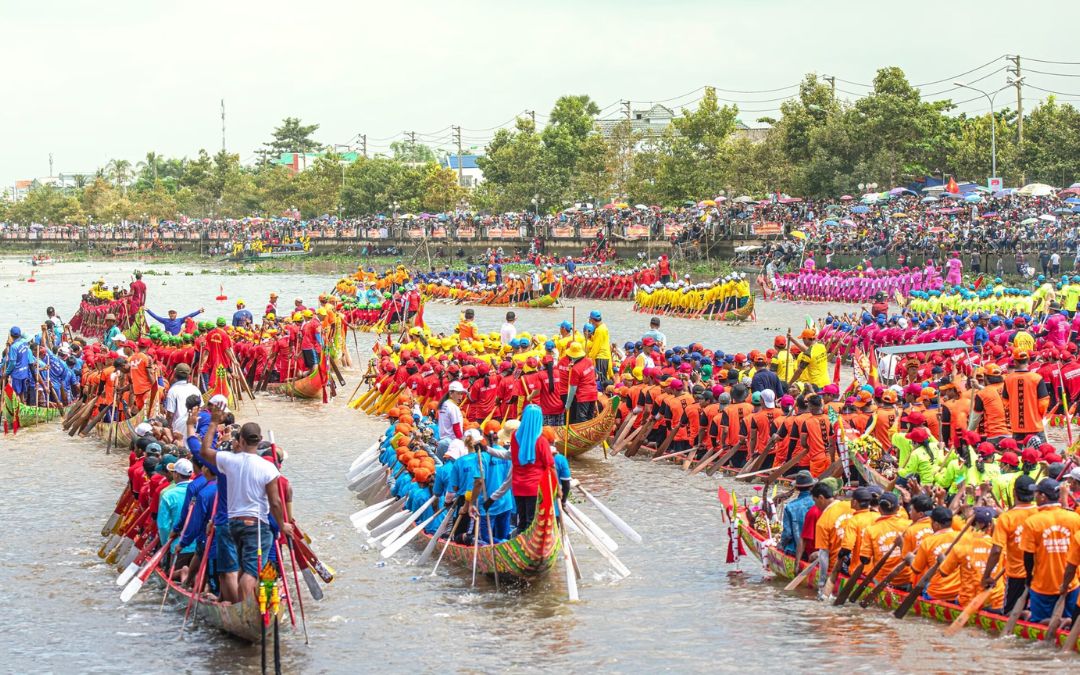
Khmer communities celebrate the moon with boat races and street fairs.
> Explore more: Top 10 Popular Festivals in Vietnam: A Cultural Journey
Travel Tips for the Dry Season in Vietnam
Traveling during Vietnam’s dry season means clear skies and reliable weather, but a bit of preparation goes a long way. Start with smart packing and planning, then follow these tips to make your journey smooth and culturally respectful:
- What to pack: In the North, bring layers—light jackets, thermal tops, scarves—for cool mornings and evenings. In the South, include swimwear, lightweight cottons, a wide-brim hat, high-SPF sunscreen, and UV sunglasses.
- Book early around Tết: During Lunar New Year, transport and accommodations fill quickly. Reserve everything months ahead to avoid full-booked trains, flights, and guesthouses.
- Festival etiquette: At events like Perfume Pagoda or Hoi An’s Lantern Festival, dress modestly, remove shoes in pagodas, greet respectfully, and avoid public displays of affection.
- Use comfortable, practical footwear: Bring supportive walking shoes for cities and hikes, plus sandals or flip-flops for beach days. Choose waterproof options if planning trekking.
- Plan flexible, realistic transport times: Road trips can take longer than expected due to traffic. Budget buffer time between activities, and consider domestic flights for long distances.
- Take advantage of early mornings and late afternoons: Dry season days can be sunny and hot, especially in the Central and Southern regions. Plan outdoor activities like hiking, cycling, or temple visits in the early morning or after 4 pm to avoid the midday heat and crowds. The golden-hour light also makes for stunning photos.
- Prepare for dry skin and dehydration: The low humidity, especially in the North, can cause dry skin and chapped lips. Bring a small bottle of moisturizer and lip balm, and drink water regularly—even if you don’t feel thirsty.
- Allergy season alert in early spring: From late February to April, dry winds and blooming flowers can trigger allergies. If you’re prone to hay fever or respiratory issues, bring antihistamines or a mask when exploring flower fields or rural areas.
Traveling during the dry season opens the door to some of the best things to do in Vietnam – trekking through northern mountains, cruising emerald bays, strolling ancient towns, or tasting life on the Mekong Delta. Each region reveals its magic under clear skies and gentle sunshine.
To make your journey seamless and unforgettable, plan your adventure with Asia Pioneer Travel. Our locally tailored itineraries go beyond checklists, weaving hidden gems and real cultural moments into every step. Let Asia Pioneer craft the story you’ll want to tell for years to come.
